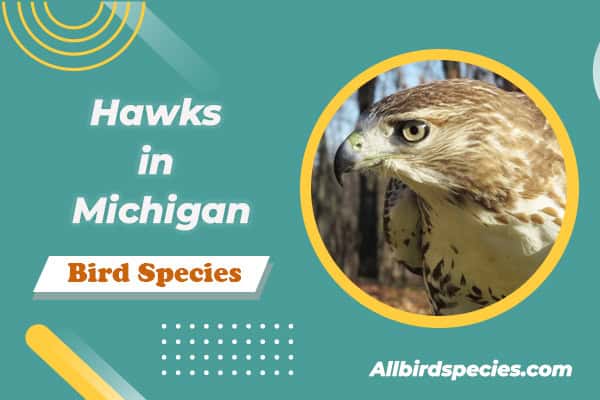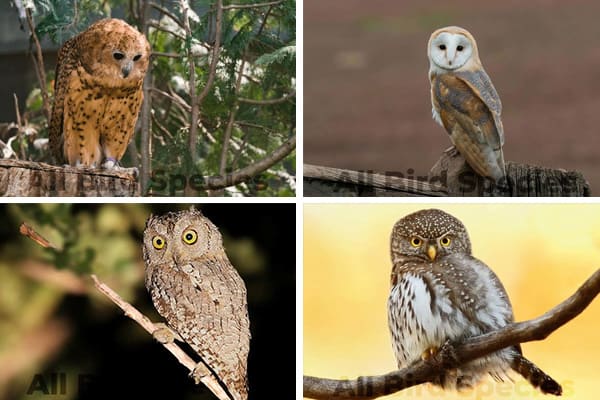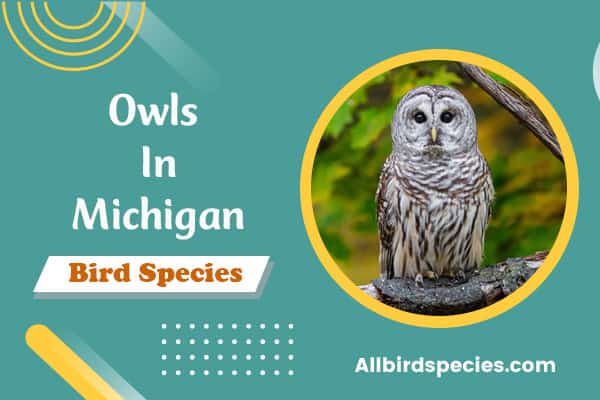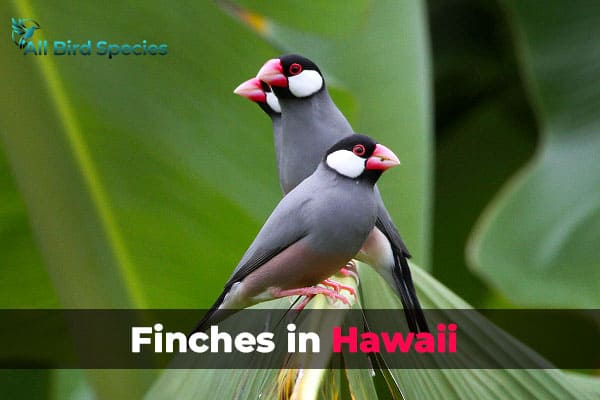Spotting 8 Types Of Hawks In Iowa (With Pictures)
Have you ever thought about the hawks in Iowa? More than 430 bird species live in the state. Iowa’s different natural areas bring in many birds, including hawks. So, what kinds of hawks can you find in Iowa? We’ll look into the 10 hawk species here.
Introduction to Hawks in Iowa
Iowa is famous for its big farm fields. But it also has many different natural homes for birds. There are over 430 bird species in Iowa. It has everything from big forests and calm lakes to open prairies and wetlands where hawks love to live.
Diversity of Habitats Attracting Hawks
In Iowa, great places to see hawks are Yellow River State Forest and Hitchcock Nature Area. Also, check out Neal Smith National Wildlife Refuge and the Great River Birding Trail. These places have different landscapes. They are perfect for the many types of hawks that visit.
Overview of Hawk Species Found in Iowa
There are 10 kinds of hawks in Iowa all year round. Some come and go with the seasons. The types of hawks you see can change. But, you’ll often find:
- Sharp-shinned Hawk
- Cooper’s Hawk
- Northern Goshawk
- Red-shouldered Hawk
- Broad-winged Hawk
- Swainson’s Hawk
- Red-tailed Hawk
- Rough-legged Hawk
- Ferruginous Hawk
- Northern Harrier
Each hawk is unique. They look different, act differently, and like different places to live. It’s really cool to spot and learn about them in Iowa’s beautiful outdoors.
1. Sharp-shinned Hawk
The sharp-shinned hawk appears small with long legs, a diminutive head, and a lengthy tail. It features blue-grey on its top side and a red-orange chest with horizontal bars. These hawks have unique short, round wings that don’t stretch beyond their heads during flight. This trait helps tell them apart from the Cooper’s hawk, which looks similar.

Description and Identification
This hawk stands out due to its short, rounded wings and elongated tail. Adults show a blue-grey back and a chest with red-orange bars, while young ones are mainly brown with white belly streaks. You might hear these hawks emit kik-kik sounds when courting.
Nesting and Food Habits
Sharp-shinned hawks choose the tops of tall trees, places well hidden under tree canopies, to build their nests. The nests are wide and made from sticks, lined with bits of bark. Here, the female will lay three to eight eggs, usually white or blue with spots. Incubation takes about a month, and the chicks need another month to be ready to fly. These hawks eat mostly small songbirds. Their diet includes different types of robins, sparrows, thrushes, and warblers. Sometimes they’ll have larger birds, small mammals like mice or voles, and even insects, too.
Conservation Status
Currently, there are around 1 million breeding sharp-shinned hawks. Sadly, these hawks face threats from pesticides and illegal hunting. Yet, the use of bird feeders has helped by giving them easy access to food, which may have contributed to their population’s stability.
Where to Find Them in Iowa
In Iowa, sharp-shinned hawks reside along forest borders and in suburban areas and might even visit backyards. They are mostly visible during winter, between September and April, when they migrate from their north breeding grounds. Places to catch a glimpse in Iowa include Hitchcock Nature Area, Red Rock Reservoir, Deere Dike, Saylorville Reservoir, and Hawkeye Wildlife Management Area.
2. Cooper’s Hawk
The Cooper’s Hawk is a medium-sized hawk. It closely resembles the Sharp-shinned Hawk, but has unique features. These hawks excel in hunting and living near people in Iowa.
Description and Identification
Identifying a Cooper’s Hawk is easy. Look for its blue-gray back, black cap, and red eyes. It also has an orange-red chest with dark stripes. Their head shape, extending past their wings, and rounded wings and tails are key. Plus, they sport a white band at the tip of their tail. Listen for their cak-cak call during courtship and nesting.

Nesting and Food Habits
Cooper’s Hawks nest high in tall trees, usually reusing old nests. A nest is a messy pile of sticks, lined with bark or twigs, and the female lays 2-6 pale blue eggs. It takes about 30-36 days for the eggs to hatch. The young hawks leave the nest 27-34 days after hatching.
They eat small to medium birds and some mammals like squirrels and chipmunks. Cooper’s Hawks are skilled at hunting in both cities and the wild.
“Cooper’s Hawks have adapted remarkably well to urban environments, and they are now a common sight in many Iowa cities and towns.”
Thanks to their great hunting skills, ability to adjust, and impressive looks, Cooper’s Hawks are essential in Iowa’s bird population.
3. Northern Goshawk
The northern goshawk is a big and strong bird of prey. They have a unique look that stands out. You can recognize them by their gray backs and bellies with thin, gray lines. They also have a white line above their eyes against a background of red eyes.

They are also very good at flying through thick trees. This is because of their wide, round wings and long tails.
Description and Identification
It can be a challenge to spot a northern goshawk. This is because they look a lot like other hawks their size. Such as, sharp-shinned and Cooper’s hawks. To tell them apart, look at their size and shape. Goshawks are bigger with shorter wings and a longer tail. Adults are usually 20-24 inches long with a wingspan of 40-46 inches.
Nesting and Food Habits
Goshawks are known for their impressive nests. They like to build them in mature trees with some open space in the canopy. Their nests are usually high up, on a big branch or close to the tree trunk. They might use these nests year after year. Sometimes, they even take over nests from other birds like them.
These birds are great hunters. They eat many different things, like birds, small mammals, and even dead animals. Their strong claws and wings help them catch their prey either in the air or on the ground.
Conservation Status
The northern goshawk is not as common as some other birds but is seen as stable, with around 420,000 breeding pairs. In the past, these hawks faced danger from farmers. Farmers believed they were a threat to their animals. Now, their main problem is losing their homes to deforestation. Protecting their woodland habitats is key to helping them thrive.
“The northern goshawk is a secretive and elusive bird, making it a challenging but rewarding species to spot in Iowa’s forests.”
4. Red-shouldered Hawk
The red-shouldered hawk is a medium-sized raptor seen in Iowa’s various parts. It has broad wings and a long tail, making it easy to spot. Its underparts are reddish-brown, and its tail and flight feathers show white and black bands. This hawk is known for its loud kee-aah call.
These hawks like to nest high in trees that have broad leaves, close to the trunk. Their nests are made of sticks and filled with lichens, bark, and moss. The female lays two to five eggs, white or faint bluish, and sits on them for 32 to 40 days. The chicks leave the nest in 42 to 49 days.

The red-shouldered hawk eats birds, small mammals, reptiles, and amphibians. It even eats crayfish. Common foods are voles, chipmunks, and many types of birds.
The number of red-shouldered hawks in Iowa has dropped in the last 50 years. They are listed as Endangered. But, their population is starting to grow again. You can still see them in places like Des Moines and Effigy Mounds National Monument.
To know a red-shouldered hawk in Iowa, watch for the reddish-brown underparts and the white and black banded tail. Also, listen for the kee-aah call. These hawks like mature woodlands near water. It’s important to keep these areas healthy for the hawks’ recovery.
| Statistic | Value |
|---|---|
| Current Population Trend | Stable in most regions |
| Conservation Status in Iowa | Endangered |
| Preferred Habitat | Mature, mixed deciduous woodlands, especially bottomland woods, riparian areas, and flooded deciduous swamps |
| Minimum Optimal Habitat Size | 600 acres of contiguous, mature floodplain forests |
| Nesting Behavior | High nest site fidelity |
| Breeding Season | March to July |
Hawks In Iowa
Three hawk species are especially interesting in Iowa. They are the red-tailed hawk, the Cooper’s hawk, and the northern harrier. Each hawk has its special traits and way of life in Iowa’s nature.
Red-tailed Hawk
The red-tailed hawk is big with its own bold look. Adult hawks are mostly dark on top with a red tail. If they’re from the east, their bellies are light with dark spots. Western birds’ bellies might be dark to reddish-brown. Young hawks have a brown tail with dark bars. You can spot them by the big light spot on their wings when they fly.
These hawks eat everything from squirrels to birds. They are big and strong, using this to dive for food or search from high up. They make messy nests out of sticks way up in trees. You can see red-tailed hawks in many places from North to Central America, including Iowa.
Cooper’s Hawk
The Cooper’s hawk is not as big, but stands out with a square head and long, round tail. Adult hawks have a blue-gray top and orange lines underneath. Young hawks look different, with a paler head and underparts. When Cooper’s hawks fly, they make quick flaps then glide.
They are good at hunting medium birds and sometimes sneak up from the ground. They build big stick nests high in trees. Look for them in wooded places mainly in Canada and the US, including Iowa, and a bit of Mexico.
Northern Harrier
The northern harrier has long wings and tail, and a white rump. Males are mostly gray with some tan on the underside. Females and young birds are darker with streaks. When flying, they often hover before diving down for prey.
Harriers like to glide low to find small animals. They nest on the ground in wetlands or grassy places. They are found breeding in open areas in the north and winter in various places, including Iowa. Hardly ever, they’re seen in northern South America.
The red-tailed hawk, Cooper’s hawk, and northern harrier are just a few Iowa hawks. They each have their own special features and habits, adding to Iowa’s rich bird life.
5. Rough-legged Hawk
The Rough-legged Hawk is special in Iowa. It has long wings and a unique black and white tail. This bird adds beauty to Iowa in the winter.
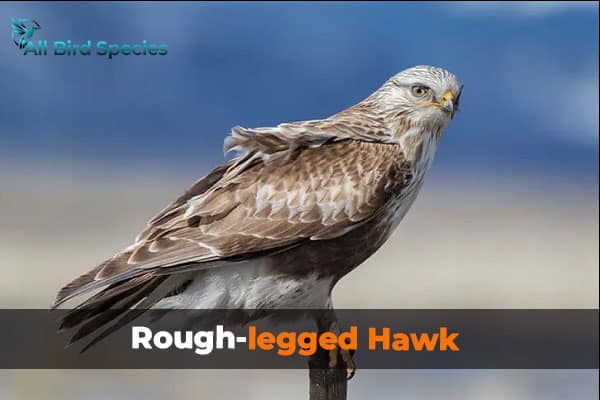
Description and Identification
This hawk is known for its broad wings and a long, light tail with a black band at the tip. It comes in two color forms. Light ones are gray-brown, while the dark ones are mostly brown.
In the sky, the hawk’s wings form a shallow “V”. This makes it easy to tell it from other hawks. These wings help it float above open lands, looking for voles and small mammals.
Nesting and Food Habits
Rough-legged Hawks breed in cold parts of Alaska and Eurasia. They make big nests on cliffs. In winter, they come to Iowa’s fields to hunt for prey.
These hawks are skilled hunters. They use their sharp sight to find food. Their diet includes voles, lemmings, and some birds. They may also eat carrion.
“Rough-legged Hawks are large, long-winged hawks that are a common sight in Iowa’s open fields and grasslands during the winter months.”
Even though the hawk numbers in the Arctic can change, they’re doing well overall. The changing climate affects where they can live. Audubon’s experts study how climate change might impact these hawks.
6. Sharp-shinned Hawk
The sharp-shinned hawk is a small, mysterious raptor found across Iowa. It’s not as common as birds like cardinals. This hawk is skilled at catching songbirds, like the American Robin. It flies with quick flaps and glides, making it exciting to watch in nature.

Description and Identification
Adult sharp-shinned hawks have red-orange bars on their breasts. The young ones are brown and have yellow eyes. They can be told apart from similar hawks by their square tail and how they hold their heads. Sharp-shinned hawks in Mexico look different, with paler bellies and a red chest. Those in the U.S. have white bellies with a gray crown.
There are even more types of sharp-shinned hawks, like those in the Andes, each with its own unique look. The ones in the Caribbean have cinnamon-colored heads and white bellies.
Despite looking different, sharp-shinned hawks share a special way of flying. They beat their wings fast, then glide. This helps them catch small birds in thick bushes.
“The specific detailing of the Sharp-shinned Hawk’s behaviors in relation to hunting small birds like Tufted Titmice suggests a high level of predatory specialization.”
In Iowa, you’ll find the sharp-shinned hawk in forests and at their edges. They hunt birds from hidden spots. Even though they’re not as common, they’re crucial for Iowa’s bird life. They help keep the balance of predators and prey in the environment.
7. Red-shouldered Hawk
In Iowa’s lush forests, the red-shouldered hawk shines brightly. It’s a mid-size hawk with a reddish-orange chest and colorful wings. You can easily spot it by its bright patterns and look-at-me presence.
Description and Identification
You can tell a red-shouldered hawk apart from others by its special looks. Male and female hawks look alike, but females are a bit bigger. They use their powerful beak and sharp talons to hunt. Listen for their loud “kee-aah” calls that fill the forest.

Nesting and Hunting Behavior
This hawk’s nest is high in tree branches, close to the main trunk. It’s made of sticks, twigs, and soft materials like moss. The female lays up to five eggs which take about 32 to 40 days to hatch. The young birds leave the nest after 42 to 49 days.
When hunting, these hawks have a smart plan. They sit and watch from high branches. When they see a meal below, like a small animal or bird, they dive to catch it with their strong talons.
The red-shouldered hawk plays a big part in Iowa’s forest life. But sadly, they face challenges like losing their home. People are working hard to help them by protecting their forest homes. This way, we can keep enjoying the sight of this amazing hawk in Iowa’s green spaces.
Read Our Previous Articles:-
| Mourning Dove Facts |
| Hawks in Florida |
| Swan Spiritual Meaning |
| American Robin Nests And Eggs |
| How to Attract Hummingbirds? |
8. Rough-bodied Hawk in Iowa
During the colder months in Iowa, bird fans look forward to seeing the Rough-legged Hawk. This big, beauty rules the winter skies. It stands out with a black and white tail and snowy white patches near the wingtips.
Identification and Winter Migration
What makes Rough-legged Hawks special? It’s their feathered legs. This stands them out from Iowa’s other hawks. They live in cold places like Alaska and northern Canada but fly south in winter. In search of rodents, they visit southern Canada, plus parts of the U.S., Europe, and Asia.
Unique Hunting Style
Rough-legged Hawks have a cool way of hunting. They can hover in the air against the wind, watching for prey below. This hunting method, called “hover-hunting,” makes them look like they’re floating in the sky. It’s a cool thing to see.
Winter in Iowa is the best time to see Rough-legged Hawks. Their numbers can be in the hundreds then. People love to watch them, amazed by their skills. It’s a great way to learn about how these amazing birds live and hunt.
“The Rough-legged Hawk is a true winter wonder, gracing the skies of Iowa with its captivating presence and unique hunting style. Observing these majestic birds is a privilege that every nature lover should experience.”
Tips for Hawk Watching in Iowa
Are you a keen bird watcher or want to see more wildlife? Iowa is a great place to watch hawks. There are many spots like the Hitchcock Nature Center Hawk Watch and the High Trestle Trail Hawk Watch. You will love seeing these amazing birds up close.
Start by putting the hawk watch season on your calendar. It lasts from September 1st to December 13th. Pick days when hawks are most active to visit. The Hitchcock Nature Center Hawk Watch sees about 13,000 raptors every year.
For the best hawk sightings, visit great birding spots in Iowa. Places like Hendrickson Marsh, Coon Creek, Maynes Grove, and Ham Marsh are perfect. Hawks, like sharp-shinned, Cooper’s, and red-shouldered, are common here. Be patient and watch carefully. Seeing these birds fly is an unforgettable experience.



